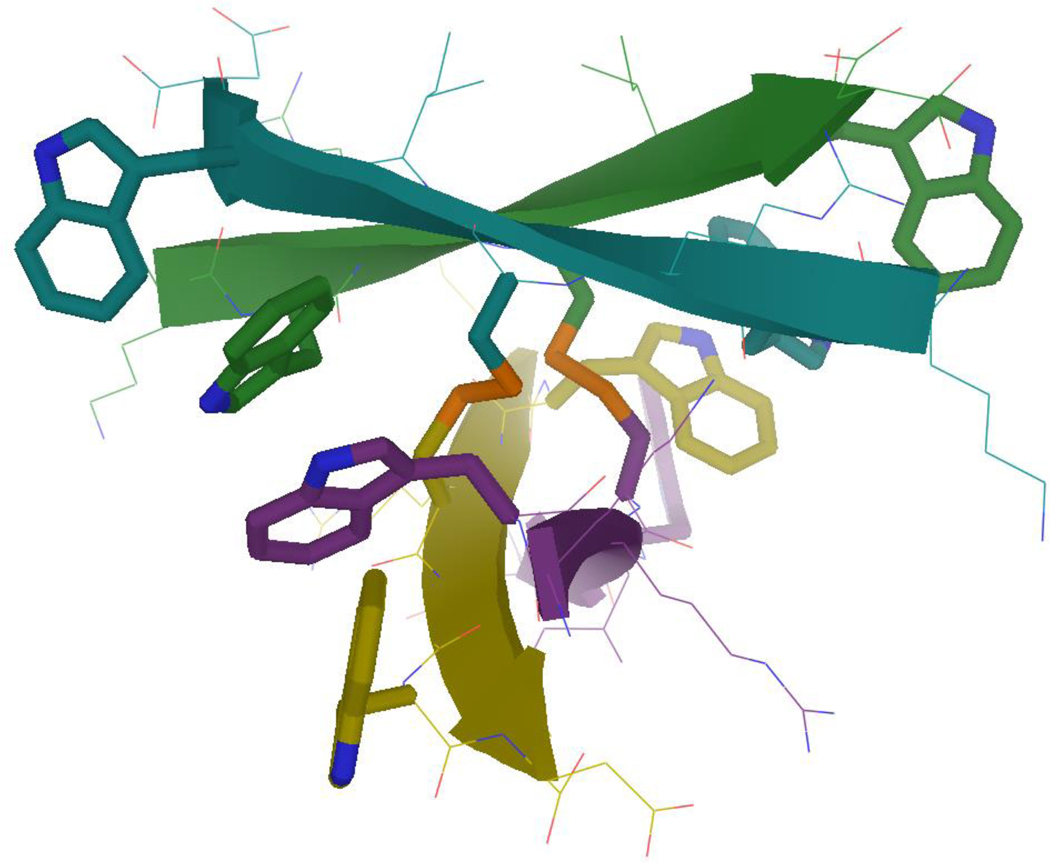Figure 7.
A proposed structure of the D2-symmetric tetramer form of KWRCIWD which reconciles the intra-indole Hδ1 –Hζ3 NOE observed. These are interchain NOEs between equivalent indoles stacking at the interface. This tetramer, with disulfides linking sheets face-to-face rather than edge-to-edge, results in efficient packing of the mostly-unchanged dimer units. Conformational exchange between this structure and the C2-symmetric dimer (with the typical edge-to-edge cross-strand disulfides) should be very slow at low temperatures, and this is indeed what we observe by NMR. Specifically, two roughly equal sets of peaks (likely corresponding to dimer and tetramer) are observed. See Supporting Information for CD and NMR data.

